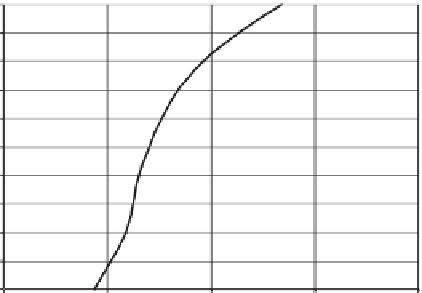Environmental Engineering Reference
In-Depth Information
In single-phase and homogeneous materials, there are three types of polarization
mechanisms: (1) electronic polarization due to the displacement of an electronic
cloud around an atom, (2) ionic polarization due to the relative displacement of
atoms in a molecule and (3) orientation polarization involving the rotation of
dipolar or polarized molecules
[13-15]
. Polarization mechanisms display one of two
characteristic spectra such as resonance or relaxation at characteristic frequencies.
In multiphase materials, the predominant polarization mechanism is spatial polar-
ization, which is also known as interfacial polarization or Maxwell-Wagner
polarization. This mechanism results from the differences in the polarizability and
conductivity among each component composing the material
[15]
. In such a condi-
tion, charges accumulate at the interfaces to maintain the same current density
throughout the contiguous layers
[13]
. Accumulation of charges at the component
inter face appears as an increase in the capacitance of the material. Spatial polariza-
tion manifests as relaxation spectra of real permittivity at radio frequencies because
the accumulation of charges under an alternating current field is strictly time
dependent. Compared with other polarization mechanisms in single-component
materials, this polarization mechanism has a very large spatial scale
[16]
.
Experimental Method
Materials and Sample Preparation
Sandy soil was used to investigate the permittivity of soil in this study. The sieve
analysis of the soil in accordance with the ASTM Standard D 442, summarized in
Fig.
1
. The quartz sand with porosity (N = 0.4, according to the procedure described
in AASHTO manual 1974) was dried and three samples of 500 g have been prepared
100
90
80
70
60
50
40
30
20
10
0
0.01
0.1
1
10
100
Sieve Size, mm
Fig. 1
The sieve analysis of the soil








